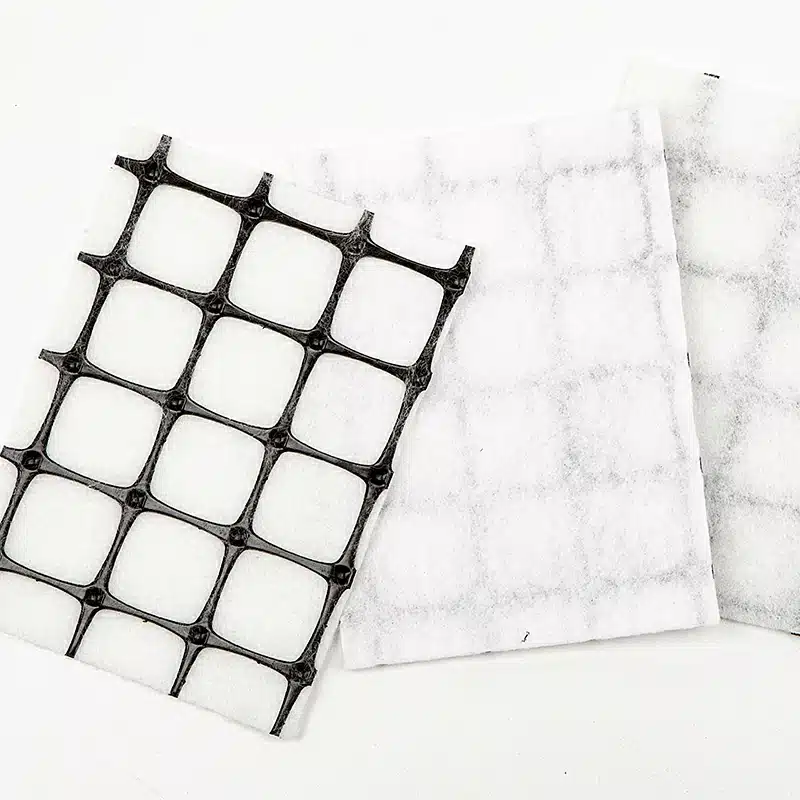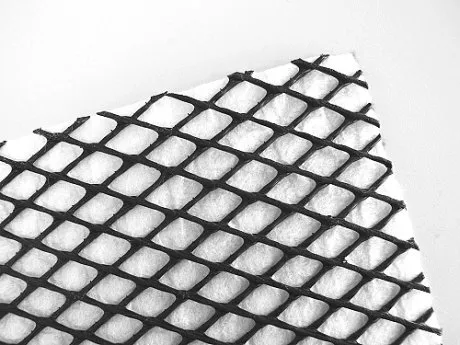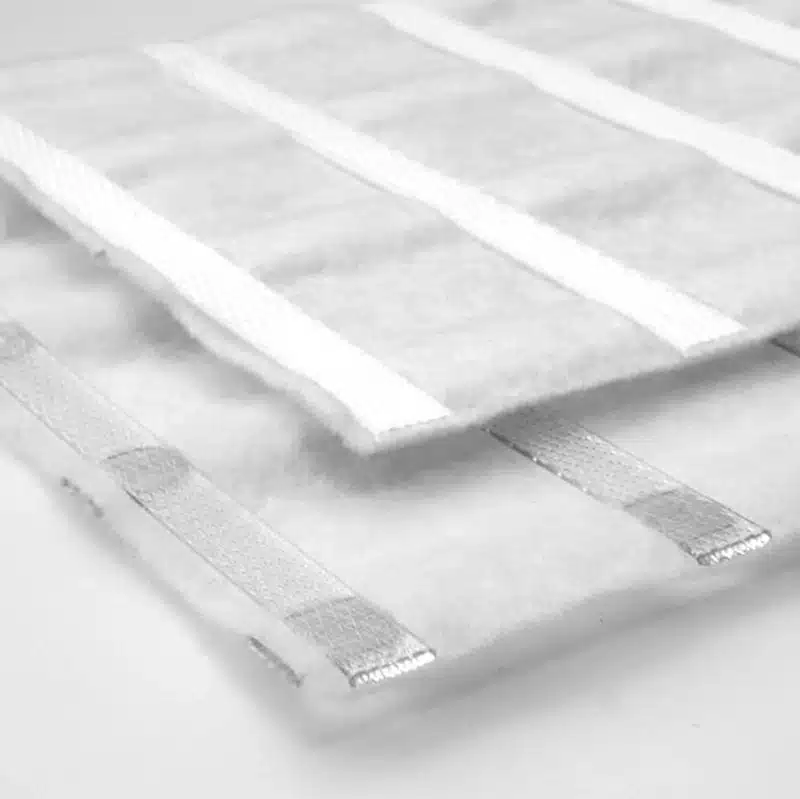+86-159 9860 6917
info@geofantex.com
geofantex@gmail.com
+86-400-8266163-44899
Transmissivity in geocomposite drainage is key in geotechnical engineering, indicating how well these materials allow fluid flow, especially water. This measure is vital for assessing their performance in drainage, filtration, and containment. Knowing a material’s transmissivity is critical for choosing the right one for effective water management and project success. Engineers depend on this understanding to make decisions that affect project outcomes, including waterlogging prevention, soil stability, and containment integrity.

What is Flow Rate Transmissivity?
Flow rate transmissivity measures how easily a porous material—like soil, rock, or geosynthetics—allows water or other fluids to pass through under a hydraulic gradient. It reflects the material’s permeability and porosity, indicating how efficiently it can transmit fluids.
Key Factors Influencing Transmissivity:
- Porosity: The volume of void spaces in the material.
- Permeability: The material’s ability to transmit fluids.
- Hydraulic Gradient: The driving force of fluid flow through the material.
Why It Matters: Knowing flow rate transmissivity helps engineers design effective drainage, prevent waterlogging, and ensure soil stability in geotechnical projects.
What is the transmissivity of geonet?
The transmissivity of a geonet refers to its ability to allow the passage of fluids, typically water, through its structure. Geonets are used in various geotechnical applications, including drainage systems, erosion control, and landfill liners. Factors influencing geonet transmissivity include the material composition, thickness, and pore size distribution. Transmissivity is measured using hydraulic conductivity tests, such as falling head and constant head permeability tests. In geotechnical engineering, transmissivity is significant as it determines the efficiency of geonet-based drainage systems and their ability to mitigate groundwater flow and associated risks.

What is the transmissivity of geosynthetics?
The transmissivity of geosynthetics, a broad category that includes materials like geonets, geotextiles, geomembranes, and geocomposites, refers to their ability to transmit fluids, especially water, across their structure. This property is crucial in applications such as drainage, erosion control, and containment in geotechnical, environmental, and civil engineering projects.
The specific transmissivity of a geosynthetic material depends on its type and design:
- Geonets and Geocomposites: These materials typically have high transmissivity due to their structured void spaces, allowing for efficient fluid flow. They are often used in landfill leachate collection, road drainage, and other scenarios requiring high fluid transmission rates.
- Geotextiles: The transmissivity of geotextiles varies widely based on their fabric composition and structure. Woven geotextiles can offer moderate transmissivity, primarily used for filtration and separation with some drainage capability. Nonwoven geotextiles, depending on their thickness and porosity, can also be used for drainage purposes.
- Geomembranes: These are primarily impermeable and do not have transmissivity as a key property. They are used for containment to prevent fluid migration.
Transmissivity values for geosynthetics are typically provided by manufacturers and are determined under controlled test conditions. These values are expressed in units like liters per second per meter (l/s/m) or cubic meters per second per meter (m³/s/m). It’s important to select a geosynthetic with appropriate transmissivity characteristics for the specific requirements of a project, considering factors like the type of fluid, flow rate requirements, soil characteristics, and overall system design.
How do you determine transmissivity?
Determining the transmissivity of a geosynthetic material, such as a geonet or geotextile, typically involves standardized testing procedures. These tests measure the rate at which water can pass through the material under specific conditions. The process generally includes the following steps:
- Sample Preparation: A representative sample of the geosynthetic material is selected. The sample must be of adequate size and condition to ensure accurate testing.
- Testing Apparatus Setup: The sample is placed in a specialized testing apparatus designed to measure fluid flow through the material. This apparatus usually consists of a system to apply a consistent hydraulic gradient (pressure difference) across the material.
- Applying Hydraulic Gradient: Water is allowed to flow through the material, and the hydraulic gradient (difference in water level or pressure across the material) is controlled and maintained constant during the test.
- Measuring Flow Rate: The quantity of water passing through the material is measured over a set period. This is typically done by collecting the water that has passed through the sample and measuring its volume, or by using flow meters.
- Calculating Transmissivity: The transmissivity is calculated using the measured flow rate, the area of the sample through which the water passes, and the applied hydraulic gradient. The formula used is: [ Transmissivity = \frac{Q}{A \times i} ] Where:
- ( Q ) is the flow rate (e.g., cubic meters per second),
- ( A ) is the cross-sectional area of the flow path through the material (e.g., square meters),
- ( i ) is the hydraulic gradient (dimensionless).
- Adjusting for Standard Conditions: The results may be adjusted to represent standard conditions (e.g., a specific temperature or pressure) if the test conditions vary from these standards.
- Repetition for Accuracy: The test is often repeated multiple times to ensure the accuracy and consistency of the results.
- Interpreting Results: The results are analyzed and interpreted in the context of the intended application of the material. This includes considering factors like the type of fluid (if other than water), the expected range of hydraulic gradients in the field, and the environmental conditions.
It’s important to note that these tests should be conducted following relevant standards (such as ASTM or ISO standards) to ensure the accuracy and comparability of the results. Additionally, the real-world performance of a geosynthetic material can vary based on factors like installation practices, soil characteristics, and long-term environmental exposure, which should be considered in the final application decision.
Why is transmissivity a crucial factor in geocomposite drainage design?
Transmissivity is a crucial factor in geocomposite drainage design for several key reasons:
- Efficiency of Water Flow: The primary function of a geocomposite drainage system is to facilitate the flow of water or other fluids. High transmissivity ensures efficient water flow through the system, preventing water accumulation and potential damage in the surrounding areas.
- Hydraulic Performance: The transmissivity of a geocomposite determines its hydraulic performance. In applications like landfill leachate collection, road subgrade drainage, or retaining wall drainage, the ability to quickly and effectively transport water away from these structures is essential to maintain their integrity and prevent failure.
- Prevention of Waterlogging and Erosion: In areas prone to high rainfall or water flow, a geocomposite with high transmissivity can prevent waterlogging and soil erosion. This is particularly important in slope stabilization and landscaping applications.
- Load Bearing Capacity: In many geotechnical applications, water accumulation can lead to increased hydrostatic pressure, which can affect the stability of the structure. A geocomposite with adequate transmissivity helps in maintaining the load-bearing capacity of the soil or structure by reducing this hydrostatic pressure.
- Longevity and Durability: Proper drainage is key to the longevity of geotechnical structures. Water accumulation can lead to deterioration of materials and structural components. By ensuring effective drainage, a geocomposite with high transmissivity can extend the life of these structures.
- Adaptability to Various Conditions: Different geotechnical applications may present unique challenges, such as varying soil types, fluctuating water tables, or chemical exposure. A geocomposite with appropriate transmissivity can be selected to meet these specific conditions, ensuring the effectiveness of the drainage system.
- Cost-Effectiveness: Efficient drainage systems reduce the need for maintenance and repairs. By choosing a geocomposite with the right transmissivity, long-term costs associated with water damage and system failure can be significantly reduced.
In summary, the transmissivity of geocomposites is a critical design consideration, directly impacting the effectiveness, durability, and cost-efficiency of drainage systems in a wide range of geotechnical applications.



Get Free Sample
We’ll respond as soon as possible(within 12 hours)





















